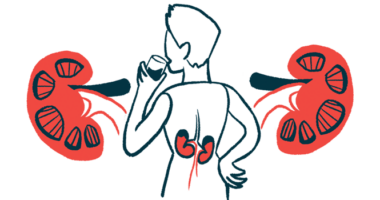Switching from Soliris to Ultomiris safe, effective for aHUS: Study
Japanese patients had stable levels of disease markers after change

Switching from Soliris (eculizumab) to Ultomiris (ravulizumab) is a safe and effective treatment strategy for people with atypical hemolytic uremic syndrome (aHUS), according to a real-world study in Japan.
The treatment switch was associated with stable levels of blood and kidney-related disease markers, preventing disease relapse or worsening and the need for additional treatment for most patients after one year, data showed.
“This study confirmed the effectiveness and safety of [Ultomiris] in Japanese patients with aHUS after switching from [Soliris] in a real-world setting,” researchers wrote.
The study, “Effectiveness and safety of ravulizumab for Japanese patients with atypical hemolytic uremic syndrome switched from eculizumab: an analysis of a post-marketing surveillance,” was published in Clinical and Experimental Neurology. It was funded by Alexion, a subsidiary of AstraZeneca, which markets both treatments.
Both therapies block key complement protein
A type of thrombotic microangiopathy, aHUS is a group of disorders marked by low levels of platelets, known as thrombocytopenia; the destruction of red blood cells, or hemolytic anemia; and formation of blood clots inside small blood vessels that leads to organ damage.
In aHUS, these abnormalities are caused by abnormal activity of the complement cascade, a part of the immune system, and lead mainly to kidney damage.
Soliris and its successor, Ultomiris, are antibody-based therapies approved for aHUS and administered through infusions directly into the bloodstream.
While they both suppress complement activation by blocking the complement protein C5, Soliris is given every other week, while Ultomiris is administered every eight weeks after initial loading doses. As such, Ultomiris may be preferred by patients due to its longer dosing interval.
Nearly three-quarters had at least one variant in complement cascade genes
In this study, researchers in Japan analyzed real-world data on the safety and efficacy of Ultomiris in people with aHUS who switched from Soliris as part of a mandatory post-marketing surveillance study.
Among the 66 aHUS patients enrolled in the study, 19 children and 14 adults who switched from Soliris to Ultomiris were included in the analysis. Most were males (63.6%), and nearly one-quarter of them had a familial history of aHUS.
Among the 29 people who underwent genetic testing, 72.4% had at least one variant in genes of the complement cascade. Additionally, 37.5% of the 16 participants tested had self-reactive antibodies targeting CFH, a protein that regulates complement activity.
Before beginning treatment with Soliris, participants received other treatments, including plasma exchange (69.7%), dialysis (66.7%), and blood transfusion (57.6%). Just over 12% of them underwent a kidney transplant. Plasma exchange is a blood-cleaning procedure that in aHUS is meant to clear the blood from the complement proteins that are driving the disease.
After starting Soliris, they took a median of nearly 3.5 years to switch to Ultomiris, and the first Ultomiris dose was given a median of 15 days after the last Soliris dose.
Blood, kidney parameters remain stable for aHUS patients on Ultomiris
In all participants, the dosing interval of Ultomiris was longer than that of Soliris, and they were receiving Ultomiris for nearly one year at the time of the analysis.
Between diagnosis and their last dose of Soliris, patients showed an increase in platelet counts and blood levels of hemoglobin, the protein in red blood that transports oxygen, and a reduction in blood levels of lactate dehydrogenase, which is a marker of hemolysis. These findings indicated lessening of disease hallmarks. Kidney function also improved, as assessed by an increase in the estimated glomerular filtration rate.
After switching to Ultomiris, all of these blood and kidney parameters remained stable up to one year of treatment. During Ultomiris treatment, all but one patient (97%) remained thrombotic microangiopathy (TMA) event-free, defined as no platelet count drop by more than 25% or to below 150 billion cells/L, no need for plasma exchange or blood transfusion, and no initiation of dialysis.
Compared with [Soliris], treatment with [Ultomiris], a long-acting C5 inhibitor, could reduce the treatment burden on patients with aHUS and their caregivers.
The patient who experienced a TMA event showed only a temporary drop in platelet counts after two weeks of Ultomiris treatment that was followed by an increase without any additional treatment.
Overall, 24.2% of the participants experienced adverse events that were deemed related to Ultomiris, and 12.1% had treatment-related serious adverse events.
The most common adverse events related to Ultomiris were upper respiratory tract infections, gastrointestinal and generalized Salmonella bacteria infections, fever, and infusion-related reactions.
No meningococcal infections, the risk of which is increased with C5 blockers, were reported during the treatment. No patient died.
“This study provides the first real-world evidence of the effectiveness and safety of [Ultomiris] in Japan,” the researchers wrote. “Compared with [Soliris], treatment with [Ultomiris], a long-acting C5 inhibitor, could reduce the treatment burden on patients with aHUS and their caregivers.”








